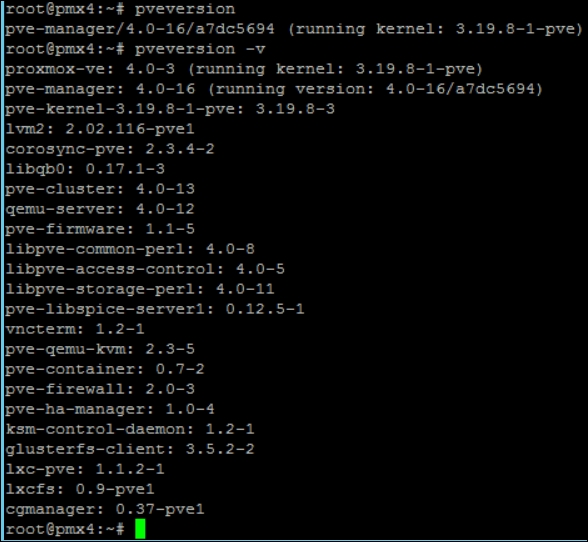Proxmox commands
In this section, we will look at the commands for performing various tasks in Proxmox through a CLI.
How to do it…
In the following sections, we will explore some of the following commands:
Node-related commands
Cluster-related commands
Storage-related commands
KVM-based VM-related commands
Node-related commands
This section shows CLI commands that pertain to individual nodes only. These commands are run on specific nodes to perform various tasks, such as checking version numbers, performance status, upgrading packages, and so on:
To check the currently installed versions of the Proxmox packages in a node, use the following command:
#pveversion –vThe preceding command is useful when trying to compare versions with installed and released updated packages before installing them
The following screenshot shows the typical output of the command with the installed package list and version information:

To upgrade a Proxmox node, use the following command:
#pveupgradeThe preceding command...
























































